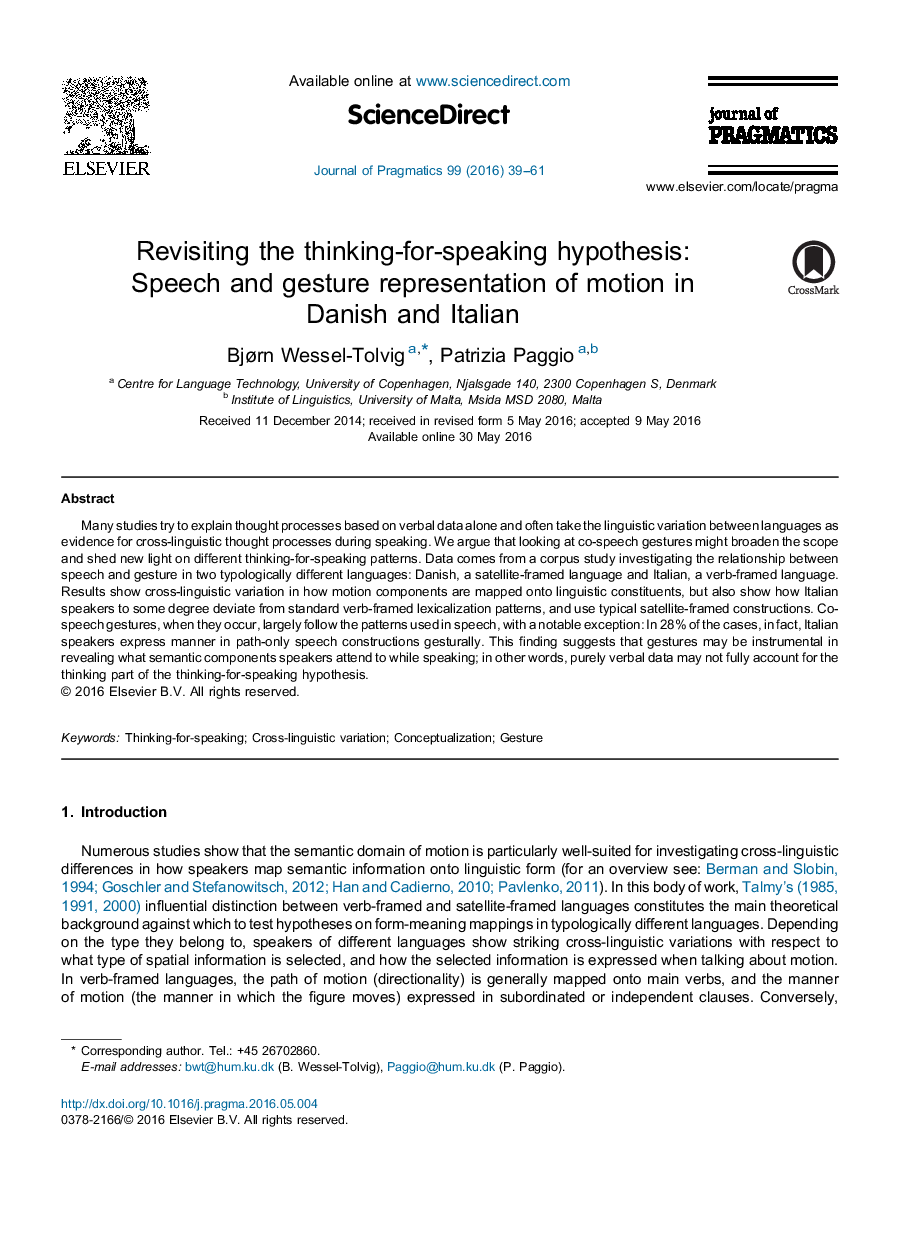| Article ID | Journal | Published Year | Pages | File Type |
|---|---|---|---|---|
| 932466 | Journal of Pragmatics | 2016 | 23 Pages |
•The study investigates cross-linguistic variation in motion encoding.•We examine gestural representation of thinking-for-speaking patterns.•We find Italian speakers deviating from standard verb-framed typology.•These deviations are reflected in gestural patterns.•Findings have implications concerning the role of gestures in thinking-for-speaking.
Many studies try to explain thought processes based on verbal data alone and often take the linguistic variation between languages as evidence for cross-linguistic thought processes during speaking. We argue that looking at co-speech gestures might broaden the scope and shed new light on different thinking-for-speaking patterns. Data comes from a corpus study investigating the relationship between speech and gesture in two typologically different languages: Danish, a satellite-framed language and Italian, a verb-framed language. Results show cross-linguistic variation in how motion components are mapped onto linguistic constituents, but also show how Italian speakers to some degree deviate from standard verb-framed lexicalization patterns, and use typical satellite-framed constructions. Co-speech gestures, when they occur, largely follow the patterns used in speech, with a notable exception: In 28% of the cases, in fact, Italian speakers express manner in path-only speech constructions gesturally. This finding suggests that gestures may be instrumental in revealing what semantic components speakers attend to while speaking; in other words, purely verbal data may not fully account for the thinking part of the thinking-for-speaking hypothesis.
